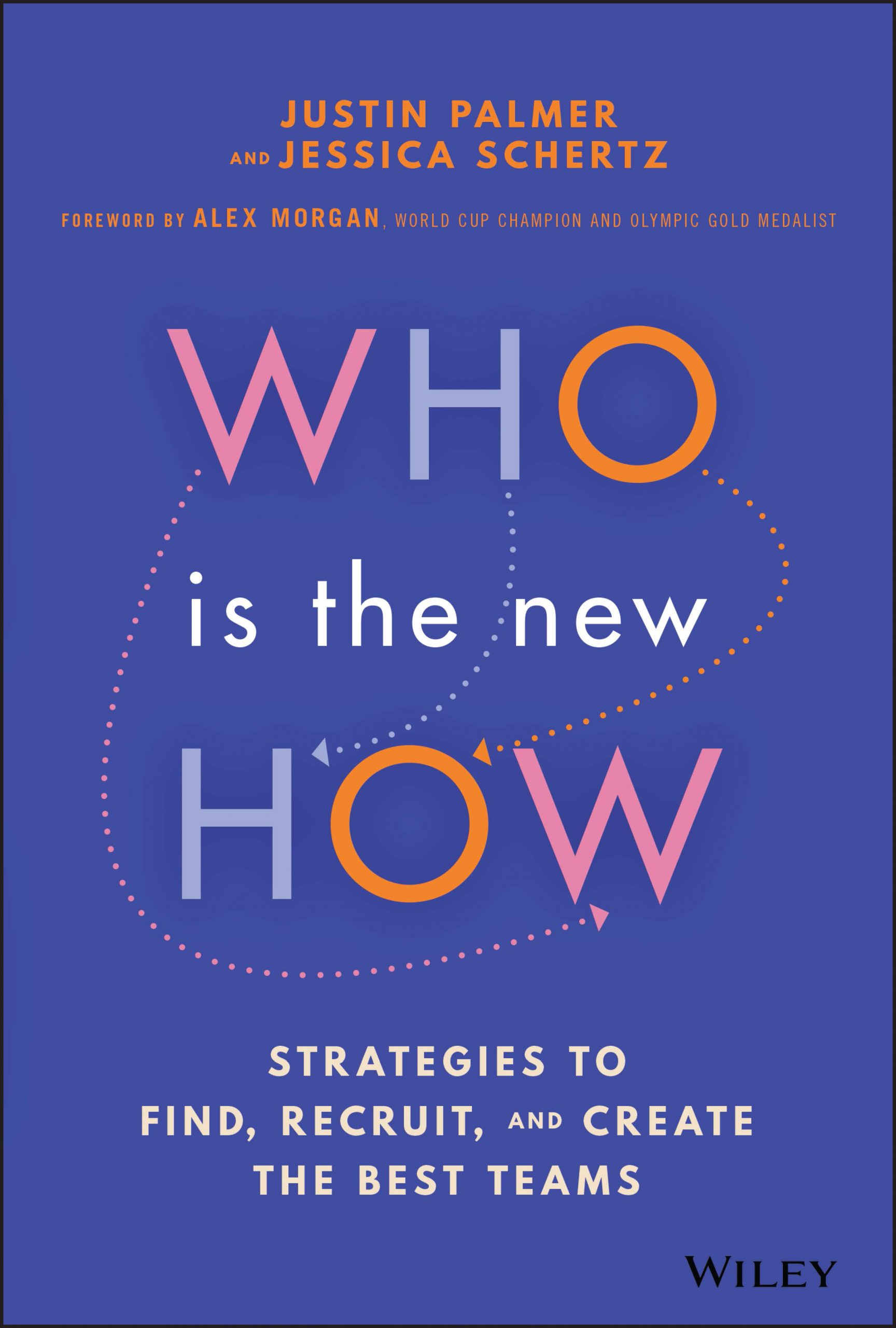In the past few years, how many companies had to change not only the way they do business but everything from inventory to hiring to processes, etc. Everything is really left up to a guessing game. Being in the HR world for many years, I have never seen the changes as I see them today.
The authors of Who is the New How challenge the readers to rethink today’s world, explaining the what and how often drive product and company growth. Think about the successful brands that have strong missions and clear business development strategies; they know exactly what they’re aiming to accomplish and how they’re going about it. But there’s something far more significant that makes it all possible, something that gives those brands the competence, momentum, scalability, and execution they need to achieve long‐term success: the who.
Palmer and Schertz believe businesses thrive when work is a source of fulfillment for employees. So, not only is their solution created to optimize every step of the hiring process but it goes beyond.
It’s full of facts, insights, and stories about the gaps in recruiting, the direct consequences of those gaps, and what it could mean for the workforce and workplace if the gaps are properly filled. If you think about who you’re actually looking for, how you’re going to go about finding them, and what it could mean for your team’s morale and success if you do then you need to read on. The chapters therein explore why the rethinking is necessary and reiterate the secret of success is all about the who.
We all know that employees are what makes successful companies so successful, you soon realize that it starts with the hiring of the right people. Hiring has to connect companies and candidates with matching paths who fulfill one another’s particular needs. In fact, the paths and values have to be aligned, but also complement each other. Some things cannot be compromised: values, goals, work ethic. And those are intrinsic to what motivates us. But we all have distinct interests and skills. When it all works best is when those interests come together, in the form of different people with diverse interests, to form a great company.
Palmer and Schertz strongly believe that today, a growing number of companies, including many in tech, are dropping the requirement for a bachelor’s degree for many middle‐skill and even higher‐skill roles in favor of skills‐based hiring. There must be a fit, right from the beginning for the relationship to be successful. As a long time Talent Management Professional, I almost always went by the gut feeling whether they had the education, I often decided on the gut feeling and the necessary skills and/or experience.
Also, building a team with lots of really talented people doesn’t necessarily guarantee a team’s success. Research shows that groups of problem solvers with diverse viewpoints can outperform groups of high‐ability problem solvers.
In today’s world you really need to recognize the diverse backgrounds, worldviews, ideas, perspectives, and cultural lenses as they are what influence innovation, efficiency, employee retention, and, yes, revenue. The emphasis therefore shifts from the obvious type of diversity that you can see to the type of diversity you can’t.
Palmer and Schertz also cover the fact that employee turnover is an inevitable aspect of business. On average, a company will experience 18% turnover of its workforce every year; 6% is involuntary, meaning loss of staff due to a reduction in force or termination due to poor performance, while 12% leave on their own volition. Regardless, the cost of turnover is significant.
We have all experienced it, when there is an employee that leaves, this also creates a reduction in employee morale and engagement, increased burnout, and the loss of organizational knowledge.
The current crisis forced companies into massive experiments in how to be more nimble, flexible, and fast. And to do so successfully, it requires a team that works the same way.
Let’s not forget how technology especially AI has affected us all. The surprising result highlights an important lesson: the process of how players and computers interact determines how efficient the partnership will be. Machines and humans will work together to enhance, rather than replace, humans for particular tasks.
Yet we not only noticed what the technology did, but what it took away: person‐to‐person interaction, human intuition, conversation, connection. In a field as personal as recruitment, it was shocking that touch points weren’t integral pieces baked right into these strategies.
Five times as many candidates said they were seeking more balance in their lives, typically work/life balance; they were moving away from jobs that are all‐consuming.
Palmer and Schertz reaffirm that taking the time to understand the current factors that influence people’s decisions ensures everyone can be on the same page and truly get their needs met. It makes for better hires and, in the long run, better company culture.
AI misses nuanced things that make someone a viable option. Full automation wouldn’t find these outliers without a human crafting a search that finds those criteria. Humans don’t have the time or bandwidth for tedious, unmeaningful work.
Think about where the world is since the pandemic where nearly a third of workers have sought out a new job because their current workplace didn’t offer flexible work opportunities; 80% (up from 75% in 2018) said that they would be more loyal to their employers if they had flexible work options
Palmer and Schertz believe that businesses thrive when work is a source of fulfillment for employees, and fulfillment emerges when great teams come together for meaningful work and growth.
An employee value proposition (EVP) is a common subset of company branding and represents everything of value that the employer has to offer its workers. While an EVP provides a concise plug‐and‐play formula, it also fosters the disconnect that exists between what companies believe employees are after and what those workers actually want.
The way that people think about work is changing. A lack of fulfillment in people’s current jobs has led to the Great Resignation and a very real shift in how people think about the future of work. With this workforce evolution, people are seeking purpose‐led employment to feel more fulfilled. That presents an exciting opportunity for companies to reimagine their hiring process as one that ensures a fulfilling match for both employees and companies
The current hiring market is competitive, expensive, and doesn’t result in either party—employers or employees—reaching their full potential. Yet everyone’s still relying on the same, outdated recruitment processes that only perpetuates the widespread dissatisfaction.
Who you have on your team is the most imperative yet underappreciated determinant of growth and success. The only how that’s applicable here is how you’re going to find them but also keep them. At the end of the day, a stable and positive culture is what will help the company grow and be successful.
This book presents a great overview of today’s world as it is but you don’t have to accept it that way, you can work it to your advantage…..
Published by Wiley
Monique Vander Eyken, HR Consultant – MVE Consulting







